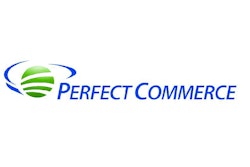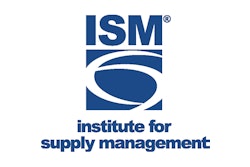Procurement professionals are constantly looking for ways to cut costs and raise the bottom line. Whether it’s following detailed discussions on business social media sites such as LinkedIn, discussing business pains and best practices at conferences, or simply brainstorming for out-of-the-box ideas, the process is never-ending. In fact, according to one recent study, the changes required in the next decade will need to be almost revolutionary compared to today’s procurement practices.
Procurement Today
No business can afford to manage its money inefficiently. While procurement and e-procurement strategies have been around for more than 20 years, companies today are faced with a new set of challenges in a continuously—and rapidly—evolving world. Political instability, natural disasters, tough market conditions, business risks, strict financial regiments, contract globalization, demanding work environments with limited resources—the list goes on and on. Add to that the implementation of new business strategies and their annual review for maximum efficiency and performance, the alignment of new processes and solutions for effective spend management, and even realigning supplier contracts for added gain—the chief procurement officer's (CPO’s) responsibilities are endless.
But today, procurement is at a new level. Most companies using today’s sourcing and procurement functions are not struggling with what to do or even how to do it. The next evolution of spend management will go beyond traditional procurement or purchasing—and definitely beyond that of sourcing—to drive further value to business lines. In fact, according to the Aberdeen Group’s “The CPO’s Agenda for 2012 … and Beyond” study, “people management [has] trumped spend management on the priority scale” of organizations.
CPOs today have an opportunity to address their company’s spend management and uncover new value in a way that has not been done before. Aggregation and further leveraging will spur the next evolution in sourcing and procurement innovation.
This model has evolved over the years to take advantage of modern-day social infrastructure to facilitate greater aggregation. Pioneered in the ’90s, these business-to-business social networks had been the vision before the days of such crowd-sourced consumer-leveraged networks such as Facebook, LinkedIn or Twitter. Now, these networks allow aggregated sourcing and procurement processes to take place to greatly increase an organization’s ability to save while simultaneously increasing value.
A global networked view of spend analysis, supplier geo-location risk assessment, performance benchmarking, buy-side leveraged categories, syndicated sourcing events for increased market exploration, supplier enablement—these are just a few of the examples of how old marketplaces have evolved to leverage existing investments in technology and in-house talent—and which will further enable the next evolution in sourcing and procurement impact.
But organizations and their strategies, as with anything today, must evolve. The business climate evolves and forces one to do things differently from a process perspective. And CPOs must be aware of that to fundamentally continue challenging themselves to uncover new value within a business—even when they may think they have exhausted every possible way to cut costs and add value.
The first step in identifying whether or not you are at the next phase of procurement evolution is to take a frank assessment of your organization and ask, “Am I doing everything for my supply base? Am I thinking of that first or am I just thinking about the bottom line?”
Procurement Tomorrow
One procurement objective has not changed throughout the years: A top-down directive to identify savings and cut costs. But to prepare for the next procurement evolution, companies must understand that there is no one solution that can solve their problems—there is no one-stop shop to get all of a company’s spend handled efficiently. For example, cutting headcount, a common practice in recessionary times, is often one of the fastest ways to cut costs. However, it does not always benefit the company in the long term.
Organizations must understand what specific data they want to leverage continuously—and in which area of their business—to identify the best platform and strategy. Do e-procurement solutions work better for companies that want to identify indirect spend more than direct spend? Or does adoption of a spend management platform provide more flexibility and visibility beyond just requests for information (RFIs) or requests for procurement (RFPs)? Is there forward-thinking technology that provides even more of a holistic strategy beyond e-procurement and spend management combined?
A new study by Deloitte Consulting LLP, “Charting the Course: Why Procurement Must Transform Itself by 2020,” reveals that procurement in the next decade “will alter existing assumptions and introduce emerging hazards. It will require additional skills, knowledge and tools to address entirely new challenges while solving current ones more creatively. And it will likely change the very core of how companies look at procurement as an organizational function and an overall company competence.”
That’s a strong warning. Its advice: a radical change in thinking. Yes, lay the groundwork today, but don’t be satisfied with just mastering the basics. “The battles procurement will fight in 2020 will build upon the training and experience of today in preparing for this new world,” the report states. “Current procurement improvement programs can help build foundational capabilities, from category management to stakeholder engagement to leadership development. However, the fundamentals will just be a starting point for success in 2020. If we stop with traditional programs alone, procurement will go the way of the old wooden battleships, outfitted to fight wars that no longer exist. That is why we must stop thinking about procurement evolution as linear steps towards an ideal future state and start preparing to build a whole new set of capabilities.”
Bill Michels, president of ISM Services, boils it down to anticipation: “Anticipate what is changing and stay ahead of your team, your company and your competition.” Sounds simple, but it takes a lot of work and vision to achieve that success. The survival of leaders in purchasing and supply chain, he adds, is dependent upon the ability to adapt to changing trends. The job is complex and continuously changing, as the Deloitte study points out, and strategy, flexibility and execution are the keys to success.
Today’s most successful companies are doing just that with their procurement. IBM’s "2013 Chief Procurement Officer Study" (of 1,128 procurement executives at companies with revenues of $1 billion or more in 22 countries), conducted by the IBM Institute of Business Value, indicates that a direct correlation between companies with high-performing procurement organizations have had profit margins 15 percent higher than the average company and 22 percent higher than companies with low-performing procurement teams.
“As CPOs take a broader view of their role and embrace technology, they have an unprecedented opportunity to become even more instrumental in transforming their organizations by modeling themselves against the world’s most innovative and effective procurement organizations,” says Craig Hayman, general manager, IBM Industry Solutions.
Organizations must identify buying habits, cost information, benchmarking against contracts and performance to initiate more real-time data in a predictive form to drive the next evolution of procurement.
If handled well, here’s what procurement will look like in the next decade, according to ISM’s Michels:
- Transparent supply chains.
- CEO recognition of sustainability as a top priority.
- Deeper collaboration with suppliers.
- Better products with small footprints.
- Financial performance dependent on a company’s sustainability performance.
And if the evolution does not occur, the results will be dire:
- Knowledge loss as experienced supply management professionals leave the profession.
- Customer loss.
- The company viewed as a less favorable supplier.
- Less financial investment from shareholders.
- Isolation-reduced market share.
- Non-sustainable business models.
The choice is yours.














